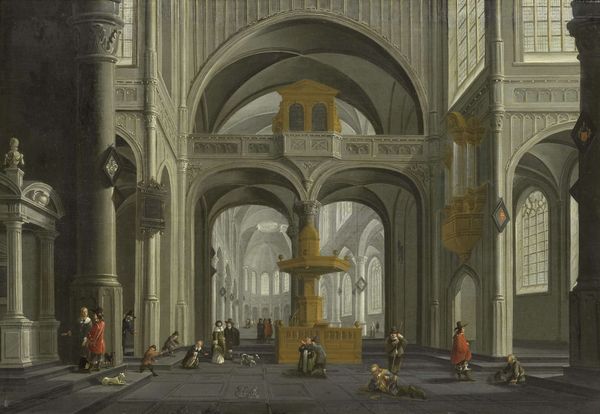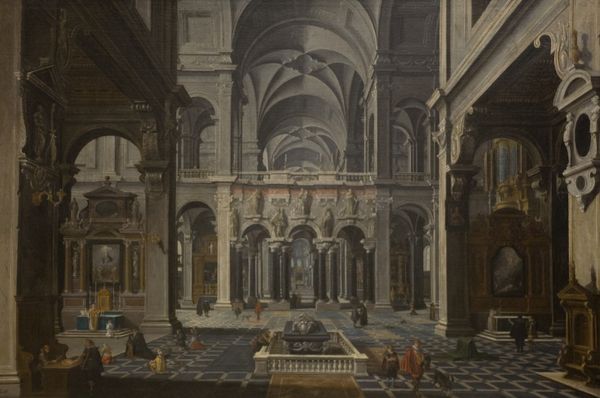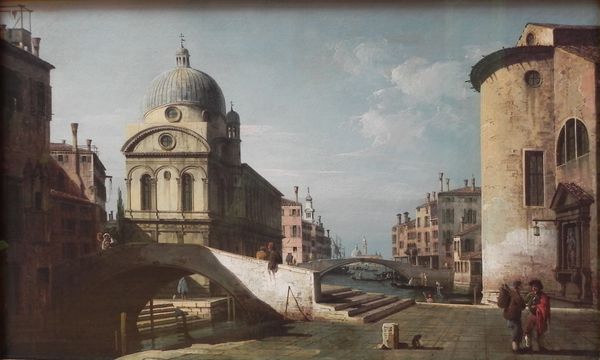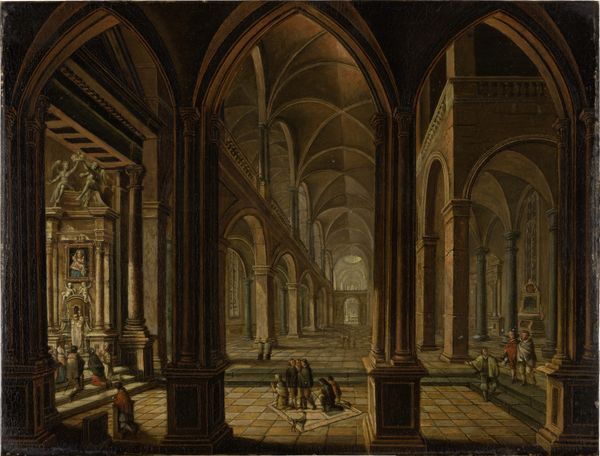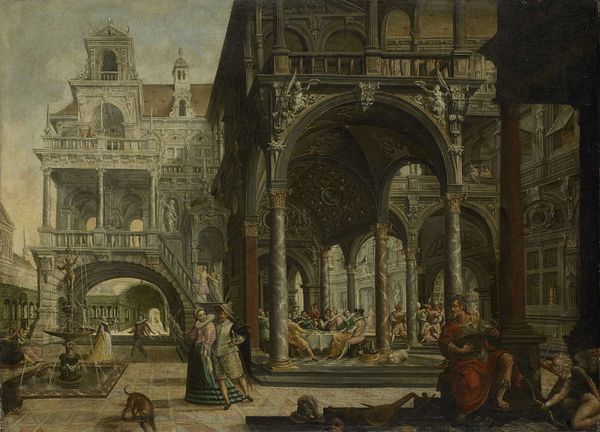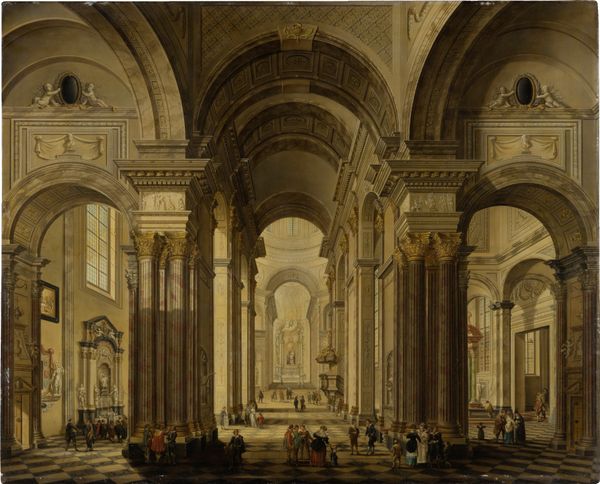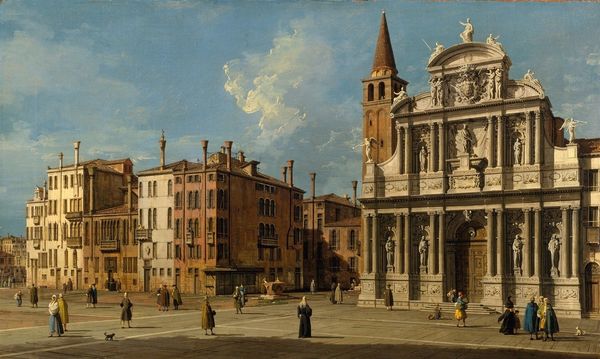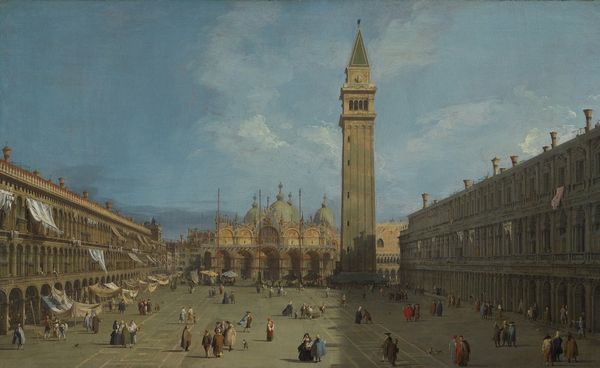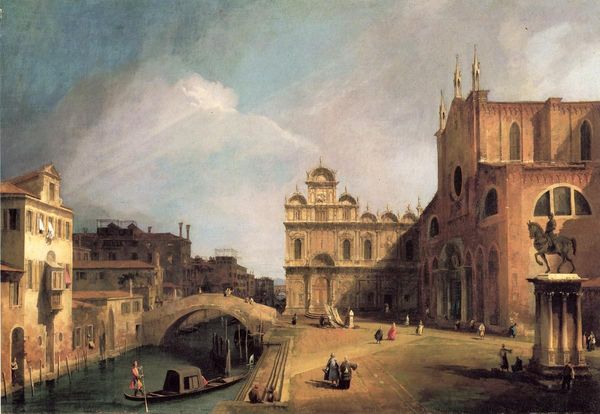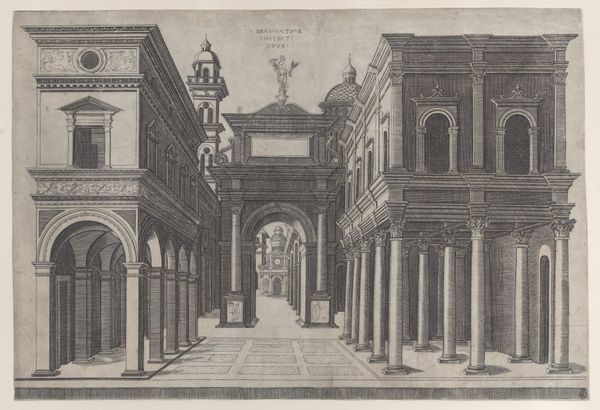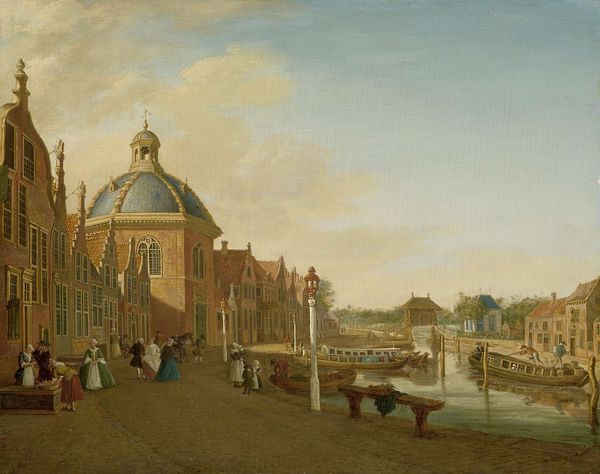
painting, oil-paint, canvas, architecture
#
narrative-art
#
baroque
#
painting
#
oil-paint
#
landscape
#
perspective
#
oil painting
#
canvas
#
history-painting
#
academic-art
#
architecture
Dimensions: 71 cm (height) x 84.5 cm (width) (Netto)
Curator: Gabriel Engels' "Architectural Motif Piece," dating roughly from 1607 to 1654, welcomes us with its intricate structures rendered in oil paint on canvas. Editor: My first impression is of staged artificiality. The colour palette is strangely muted, and there is almost too much perspectival symmetry for it to feel like a real place. Curator: Indeed, the theatrical staging serves as a vehicle for narratives. This use of architecture carries deep symbolic resonance, invoking not only human aspiration but also order, and often societal control. We can see groups and figures, small in scale, in comparison to the buildings, so social events, performances or even civic dramas unfold within them. Editor: Look at the technique though, it feels so reliant on line, draftsmanship, and the materiality of oil is almost repressed! Is the handling of light also significant? Is this Baroque classicism actually communicating a truth, or just making pretty shapes? I mean, what are we consuming when we look at this? Curator: I understand your reading of the materiality in relation to truth. The symbolism relies on an ideal, but look how certain colours and images echo down the ages, suggesting our longing to connect, but to which point in history does that impulse link back to. The architecture is both a setting and a protagonist in the story, imbued with human stories that extend past the visible canvas. Editor: It makes me think of the guilds that would have been supporting the trade in pigments and canvas, a reminder of the commerce embedded in the production, rather than just transcendent images, wouldn't you say? It speaks to the network involved in production, and the artist's reliance on that material support structure. Curator: You bring an important perspective to the piece and I see it now as so tied to societal values during that era. It allows us to contemplate on what still is valuable now. Editor: Absolutely. Engels' choices push me to reconsider art making, even nowadays.
Comments
No comments
Be the first to comment and join the conversation on the ultimate creative platform.
